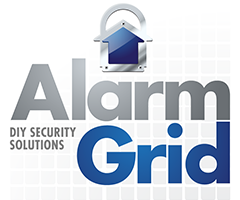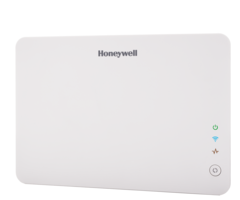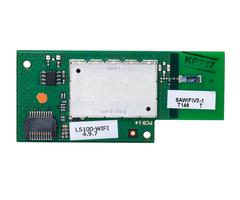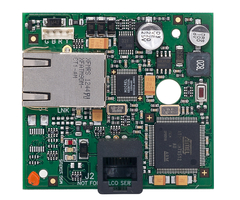Honeywell AlarmNet Internet Connectivity Test Dated: 9/13/18
Related Products











Related Categories
Document Transcript
-
1
-
Updated:
9/13/18
Step
-
By
-
Step
Internet
Connectivity Test
for
AlarmNet
And Total Connect Services
The TELNET tool at the DOS Command Prompt can be a useful tool to
confirm network
connectivity to a server
and
diagnose
IP
connectivity problems.
It is best to perform this test from
a PC or laptop using the same
network
cable that plugs directly into the AlarmNet communicator
or with a
Wi
-
Fi
connection to the same Access Point
.
Telnet
Test Procedure:
1.
Open a DOS
command prom
pt window:
A.
To do this, click “Start”
and then
click “Run”.
B.
When the dialog box opens type, “cmd” and press .
2.
A valid T
elnet command will be entered like this:
C:
\
>
telnet {Server Name or IP Address} {Port}
3.
As an example, a
t
the DOS prompt “C:
\
>”
you will
type the following
to test connectivity
to the server named “
auiredir1.alarmnet.com
” over port 443:
telnet
auiredir1.alarmnet.com
443
After entering the Telnet command
and clicking
, the window should “blank
out” and the cursor will return to the top left and flash.
Note:
When provided, i
t is recommended to perform the telnet test to the server names
(auiredir1.alarmnet.com)
in addition to th
e IP address (204.141.57.100) because this will also test
the DNS s
ervice for IP resolution. If the test fails with the server name, but passes when the IP
address is used, there is likely an issue with the network DNS service.
4.
Next, type about 15
–
20 characters, you will see the socket quickly close and your
command
prompt will return, “C:
\
>”. This indicates connectivity
to the designated server
is working.
Refer to page
s
4
-
6
of this document for the full list of server names, IP
addresses, and ports that should be tested.
If there is a problem
...
1.
“Connecting to
204.141.57.100...”
followed about 30
-
60 seconds later by “Could not
open...” In this case, there was a full failure to connect to the
Server or
IP address
requested. The customer (
or
Network Administrator) should check their router
and firewall
-
2
-
Updated:
9/13/18
Step
-
By
-
Step
settings to v
erify ports 80 and 443 are not block
ed for
outbound
traffic
. Please note there
is
no need to ope
n any ports for
inbound
traffic
.
2.
The window does “blank out” but when you type a bunch of characters and hit
you get an
HTTP
-
type long error
page. T
here is likely a PROXY server between the
computer being used to TELNET and the Internet. In general,
our equipment won’t work
behind a Proxy
, but there may be some network engineering that can be done at the site to
work around this, depending on the equ
ipment being used.
While our units were designed to work behind Firewalls and usually require no additional
network
configuration
, some networks
employ
security measures that
can
cause connectivity failures.
T
hese may include:
Proxy Servers
Stateful
Packet Inspection (SPI)
Packet or IP filtering
Any software that attempts to open or look inside our encrypted data packets.
If there is a problem reaching any
of the AlarmNet servers, t
he customer sh
ould contact their
network administrator and
ask them t
o exclude the AlarmNet
Servers and
IP addresses from
Firewall rules, SPI, and
PROXY
settings
and ensure the IP addresses have unrestricted access to
the internet over
the listed
ports (
for outbound traffic only
)
.
AlarmNet Technical Support can answer
general questions, but cannot assist with making
modifications to the end
-
user network. These changes should be made by a network professional
or someone familiar with the network
requirements and
other
parameters
.
Static or DHCP Settings
AlarmNet Inter
net products can use either DHCP or Static IP addressing. If problems occur due to
automatic IP releasing
1
on the network, the AlarmNet device should be switched to a Static IP. If
static IP’s are being used, the following information is needed from the
Network Administrator
before installation:
Static IP address for the AlarmNet device
Subnet Mask
Default Gateway
DNS IP Address
1
Automatic IP Releasing: AlarmNet Internet products ping AlarmNet every 20 seconds to verify
connectivity; therefore, it rel
eases the previously assigned IP address at the end of its session and
requests a new one each time
it
checks connectivity.
-
3
-
Updated:
9/13/18
Step
-
By
-
Step
IP addresses and Servers used for AlarmNet Services
Alarm
Reporting
and other AlarmNet Services
The
Server names and
IP Addresses
below are used for alarm reporting
, Total Connect services,
and Compass over IP
.
Test these at the AlarmNet
IP
communicator.
REDIR
1 ................ auiredir1.alarmnet.com (204.141.57.100)
{ports 80, 443}
*
REDIR
2 ................ auiredir2.alarmnet.com (204.141.57.101)
{ports 80, 443}
*
REDIR
3 ................
Test to IP address only
(
12.149.218.73
)
{ports 80,
443}
*
*
Port 80 is required
only
for
Alarm Reporting with
older, legacy AlarmNet communicators
(7845i,
7845i
-
ent) and the 7810 receiver.
Total
Connect
Services
The IP Addresses below are used
for Total
Connect
1.0 and
2.0
services
.
Test these at the
AlarmNet
IP
communicator
.
REDIR
1 ................
auiredir1.alarmnet.com
(
204.141.57.100
) {port
443}
REDIR
2 ................
auiredir2.alarmnet.com
(
204.141.57.101
) {port
443}
REDIR 3 ................
Test to IP address only
(
12.149.218.73
) {port 443}
Data Server1 ....... dataserver1.ala
rmnet.com (204.141.58.80) {port
443}
Data Server2 ....... data
server2.ala
rmnet.com (204.141.58.81) {port
443}
Total
Connect video:
The Server names and IP Addresses below are used for
LEGACY (non
-
HD)
Total
Connect Video
services
(TC1 and TC2)
.
To verify connectivity for cameras
from the user network
,
use
a
web browser to verify
connectivity to
https://video.alarmnet.com/test.aspx
. Bypass the warnings for an invalid certificate
and continue on. Once connected, you should see a page that shows the public DN
S for one of the
AlarmNet video servers.
To verify that cameras will be able to upload video clips, use
a
web browser to verify connectivity
to
https://files.alarmnet.com/test.htm
-
you should get back a screen that says “This is a test...”
If
the
problem
is on a
mobile app
,
use
a
browser to
verify successful connection
to
https://video.secure.alarmnet.com/test.aspx
-
4
-
Updated:
9/13/18
Step
-
By
-
Step
Compass:
The
Server names and
IP Addresses below are used
for Compass IP Downloading
. Test these at
the AlarmNet communicator and programming PC/laptop.
REDIR 1 ................ auiredir1.alarmnet.com (204.141.57.100) {port 80, 443}
REDIR 2 ..............
.. auiredir2.alarmnet.com (204.141.57.101) {port 80, 443}
REDIR 3 .......................................................
(
12.149.218.73
) {port 80, 443}
Control Server ..... controlserver.alarmnet.com (204.141.58.115) {ports 80, 443}
Data Server1 ....... da
taserver1.alarmnet.com (204.141.58.80) {ports 80, 443}
Data Server2 ....... dataserver2.alarmnet.com (204.141.58.81) {ports 80, 443}
Enabling Telnet in
W
indows Vista/Windows 7
1.
Open “
C
ontrol
P
anel
”
2.
Go to “
P
rograms and
F
eatures
”
3.
Click “
T
urn on
W
indows
F
eatures
O
n or
O
ff
“
4.
Select “
Telnet Client
”
5.
Click on “
OK
”
6.
Now follow procedures
t
o Telnet
- Uploaded
